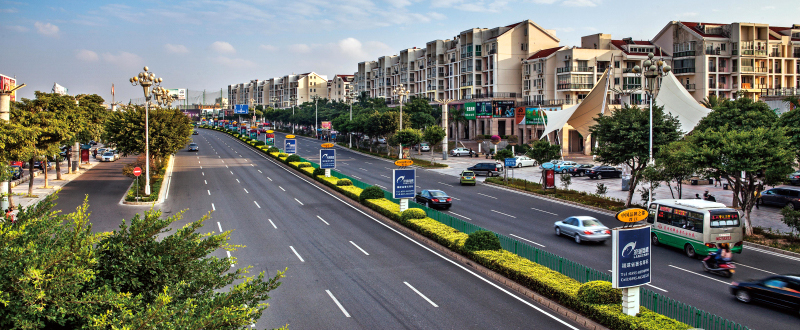Small, medium-sized cities key to new model of urbanization

Pictured above is a glimpse of Jinjiang, Fujian Province. The city, which has succeeded in comprehensive development through “Jinjiang experience,” is striving to forge a model of small and medium-sized cities development.
The report to the 19th CPC National Congress stressed creating networks of cities and towns based on city clusters, enabling the coordinated development of cities of different sizes and small towns. Scholars said that numerous small and medium-sized cities not only constitute an important component of China’s urbanization system, but also are crucial to the new model of modernization.
In recent years, remarkable progress has been made in the urbanization drive. According to data released by the National Bureau of Statistics, urban population accounted for 58.52 percent of the total by the end of 2017, up 1.17 percentage points from the end of the previous year.
“Small and medium-sized cities feature low production, living and business costs alongside large space for urban development, which makes them capable of playing a significant role in integrating big central cities, small towns and villages, and in supporting industries,” said Geng Qiang, a professor of economics at Nanjing University.
Small and medium-sized cities can work as sub-centers of city clusters and form independent urban circles with downtown areas as the core, thus making up large-scale urban agglomerations, Geng said, adding that small and medium-sized cities adjacent to big central cities can cooperate closely with the latter to relieve them of non-essential functions.
Huang Qian, a professor of economics at Nankai University, said that small and medium-sized cities are a crucial driver of economic development in the new era, forming vital bonds in rural revitalization and coordinated urban-rural development. In the new era, the new model of urbanization with Chinese characteristics will be people oriented and led by city clusters, Huang said.
Urbanization is the only way to modernize cities. During the urbanization of small and medium-sized cities, China still faces such problems as unbalanced urban development, demographic polarization, weak attractiveness to talent, and slow marketization.
Jiang Quanbao, a professor from the School of Social Policy and Administration at Xi’an Jiaotong University, said development planning is vital to small and medium-sized cities.
It is essential to learn from big cities and attach importance to coordinated, sustainable development, thereby setting the stage for future population concentration and industrial growth, Jiang said. The optimization of industrial structure also matters. In this regard, local features can be capitalized on to forge distinctive cities, develop strategic industries and create industrial clusters.
In addition, focus can be put on policy, employment, environment and service to enhance the attractiveness to talent and catch up with other cities with the support of talent, Jiang said.
Urbanization is also a war for talent. Currently, first- and second-tier cities, which are expanding and undergoing industrial transformations, are scrambling for talent, underscoring the significance of human capital in regional economic development.
Jiang said that small and medium-sized cities should not only pay attention to problems and urgent needs of talent in big cities and release attractive supporting policies regarding housing, transportation, childbearing and education, but also provide different degrees of support to different levels of talent.
Small and medium-sized cities should focus on solving such problems as small economic size, simplex industrial structure and few job opportunities, fostering industrial clusters and creating more jobs to offer talent more choices, Jiang said, adding that improving services and the city environment is likewise important.
(edited by BAI LE)
